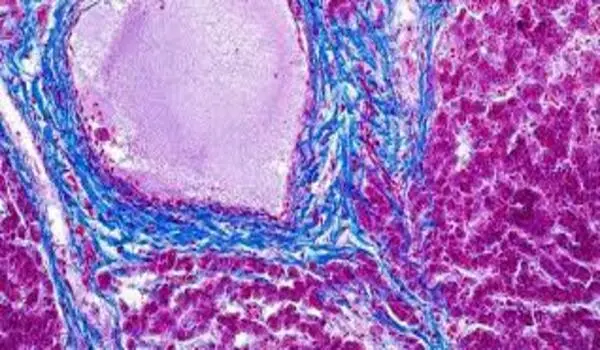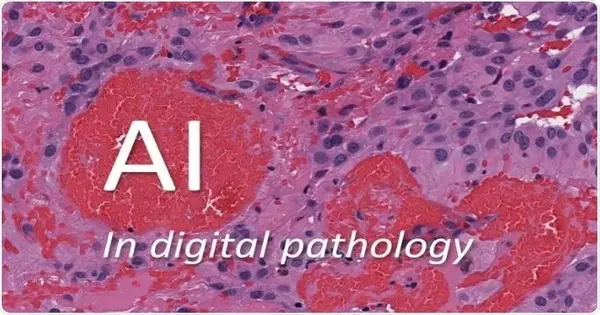Mr. Sanj Lallie, Commercial Director of Digital Pathology at Source LDPath, explains how digital pathology will be adopted across the country and how it will help to shape the future of medicine.
For nearly ten years, LDPath (formerly Source LDPath, “Source LDP”*), which has been offering professional histopathology services to the NHS for nearly ten years, has met the rising need for histopathology expertise. The increasing workload in UK-based histology departments, combined with a scarcity of histopathologists, has created a crisis.
These supply and demand issues have resulted in massive backlogs, which have frequently violated NICE cancer recommendations. Worryingly, the shortage of qualified specialists in the field of histopathology is expected to endure for at least ten years. There are currently no policies in place in the UK by any health body to fight this.
A lack of pathologists, along with an increase in cancer cases, creates a solid foundation for necessity—and necessity is the mother of innovation. Other factors are at work, such as the human and economic costs of diagnostic errors. All of this creates an ideal ground for implementing new technologies, particularly AI.
It is generally recognized that inter-reader variability in histological diagnosis can be significant. For example, a 75 percent overall concordance rate was observed in the examination of breast biopsies, but only a 48 percent inter-observer agreement for a diagnosis of atypical hyperplasia (Elmore et al. 2015).the interpretation of melanocytic neoplasms on skin biopsies (Elmore et al. 2017). The importance of restricted precision and interpretive correctness is clearly demonstrated by these findings.

The goal of AI techniques is to solve problems in pathology.
Within pathology, AI approaches strive to address these challenges, expanding on the data-driven revolution and digitalisation of workflows, and there are even national programs to promote AI adoption, development, and validation.
AI already provides pathologists with a plethora of benefits and has been successfully used in the Nordic areas. It performs time-consuming, subjective, and repetitive tasks in order to reach conclusions based on statistical likelihood and then reports its findings to the overseeing consultant for approval or rejection. Dynamic, clinical-grade tools are easily available to save consultants’ time and increase accuracy in areas like IHC scoring, tumor localization, mitotic counting, and margin location. Enhancing the diagnosis of screening programs can reduce workloads by 70–85% and save a significant amount of time, especially in lymph node and prostate screening.
As AI advances, it will be able to perform increasingly difficult jobs with precision unequaled by the human eye, but in a way that augments rather than replaces established workflows, allowing specialists to apply their knowledge in new ways. Histopathology is growing into a more dynamic state as digital drivers push forward with new technology, as data accumulates, and geographical limitations for working are removed.
Gone are the days when “to make sense of histology and cytology slides, a microscope required a table lamp as its external light source and a mirror on its base” (Laszlo Igali, Ferenc Igali, 2019). Pathology departments all around the country and the world are using global digital processes to communicate with their teams and each other—and, most importantly, with data.
Digital Slide Scanners, which automate the digitization of biopsy slides, are now widely used, with laboratories across the country scanning slides at a high pace. However, a lack of pathologists, high demand, and old, difficult-to-change systems provide significant impediments to these novel technologies benefiting service users and improving results. Scanning slides and being “digital” is only the first stage of the digital revolution.
Digital workflows will become more common over time, and Source LDP can assist partners in bridging the gaps and taking advantage of new digital capabilities.
We are now entering a new era of augmented intelligence (AuI), whereby AI will work alongside clinicians in the decision-making process.
Laszlo Igali, Ferenc Igali,
Source LDP has a track record of adjusting and opening up new digital opportunities for partners when businesses take their first, or next, steps into the digital realm, including assistance with AI. Source LDP collaborated with Ibex, a producer of high-precision diagnostic tools, to develop algorithms that may be used in clinical practice in a user-friendly manner to help with the digital workflow in the histopathological landscape.
Individual NHS institutions do not need to construct costly infrastructure because the Source LDP ecosystem provides approved apps, letting them focus on implementation and reap the benefits of these augmented digital workflows.
Histopathology departments in the NHS are relieved of some of their workload because of digital capabilities.
Using the fast turnaround services while exploring new digital possibilities allows NHS histopathology departments to reduce strain and free up valuable staff time to focus on a more targeted and effective deployment of their expertise.
Source LDP provides a litany of benefits—solutions that save time, improve testing accuracy and reproducibility in laboratories, and deliver results faster and at a lower cost—through the development of proprietary software and collaboration with others at the forefront of the revolution, such as Ibex.
New waves of technology are on the horizon, including simplified, context-driven, and personally customisable digital workflows with seamless human-computer interaction, as well as 3D visualization and scanning, including live volumetric measurements, remote holographic assistance, and a slew of other VR and AR ideas, as well as increasingly powerful augmented intelligence. By providing pathologists and departments with new tools with which to build the future of medicine, adopting validated and tested new technologies will improve the workflow for all stakeholders and everyone affected by it. It will also greatly increase the effectiveness of each pathologist and department.
Source LDP hopes to make these available to every digital pathology-using institution with whom they will actively cooperate in order to speed their own digital journey.
Find out more about LDP Source.
Source LDP is a one-of-a-kind UK-based comprehensive rapid digital cellular pathology reporting service that combines cutting-edge histology whole slide imaging with a pathologist-designed Lab Information Management System.
Source LDP’s reporting capabilities have been created by bringing together the UK’s largest digital network of specialists, which was founded and led by NHS consultant histopathologists. Source LDP’s unrivaled specialised reporting services are now used by over 450 hospitals, clinics, and physicians across the country.
Source LDP, as pioneers in digital pathology, provides:
End-to-end Reporting in the Digital Age
A managed histopathological service is available, from courier to report delivery, via courier.
Turnaround times that are unrivaled.
Specialist reporting is included in every SSL-encrypted LIMS application, allowing you to easily and securely retrieve your reports.
Support for Multi-Disciplinary Meetings.
A one-of-a-kind, integrated second opinion function that gives you access to national and international experts right away.
Tools for ensuring AI quality.
References
- Elmore JG, Longton GM, Carney PA, et al. Diagnostic Concordance Among Pathologists Interpreting Breast Biopsy Specimens. JAMA. 2015; 313(11): 1122–1132. doi: 10.1001/jama.2015.1405.
- Elmore JG, Barnhill RL, Elder DE, Longton GM, Pepe MS, Reisch LM, Carney PA, Titus LJ, Nelson HD, Onega T, Tosteson ANA, Weinstock MA, Knezevich SR, Piepkorn MW. Pathologists’ diagnosis of invasive melanoma and melanocytic proliferations: observer accuracy and reproducibility study. 10.1136/bmj.j2813. BMJ. 2017 Jun 28; 357: j2813. doi: 10.1136/bmj.j2813.PMID: 28659278; PMCID: PMC5485913. BMJ. 2017 Aug 8; 358: j3798. PMID: 28659278; PMCID: PMC5485913.
- Ehteshami Bejnordi B, Veta M, Johannes van Diest P, et al. Diagnostic Assessment of Deep Learning Algorithms for Detection of Lymph Node Metastases in Women With Breast Cancer. JAMA. 2017;318(22):2199–2210. doi: 10.1001/jama.2017.14585.
- Campanella, G., Hanna, M.G., Geneslaw, L. et al. Clinical-grade computational pathology using weakly supervised deep learning on whole slide images (2019) Nature Medicine, 25, 1301–1309.https://doi.org/10.1038/s41591-019-0508-1
- Snead DR, Tsang YW, Meskiri A, Kimani PK, Crossman R, Rajpoot NM, Blessing E, Chen K, Gopalakrishnan K, Matthews P, Momtahan N, Read-Jones S, Sah S, Simmons E, Sinha B, Suortamo S, Yeo Y, El Daly H, Cree IA. Validation of digital pathology imaging for primary histopathological diagnosis. doi: 10.1111/his.12879. Epub 2015 Dec 6. PMID: 26409165. Histopathology. 2016 Jun;68(7):1063-72. doi: 10.1111/his.12879. Epub 2015 Dec 6. PMID: 26409165.
- Igali, I. (2019), The Road to Augmented Pathology, https://thepathologist.com/inside-the-lab/the-road-to-augmented-pathology.(Accessed February 2, 2022).
Source LDPath Ltd is now Source LDPath following the acquisition by SourceBio International plc (AIM: SBI) in March 2022.





